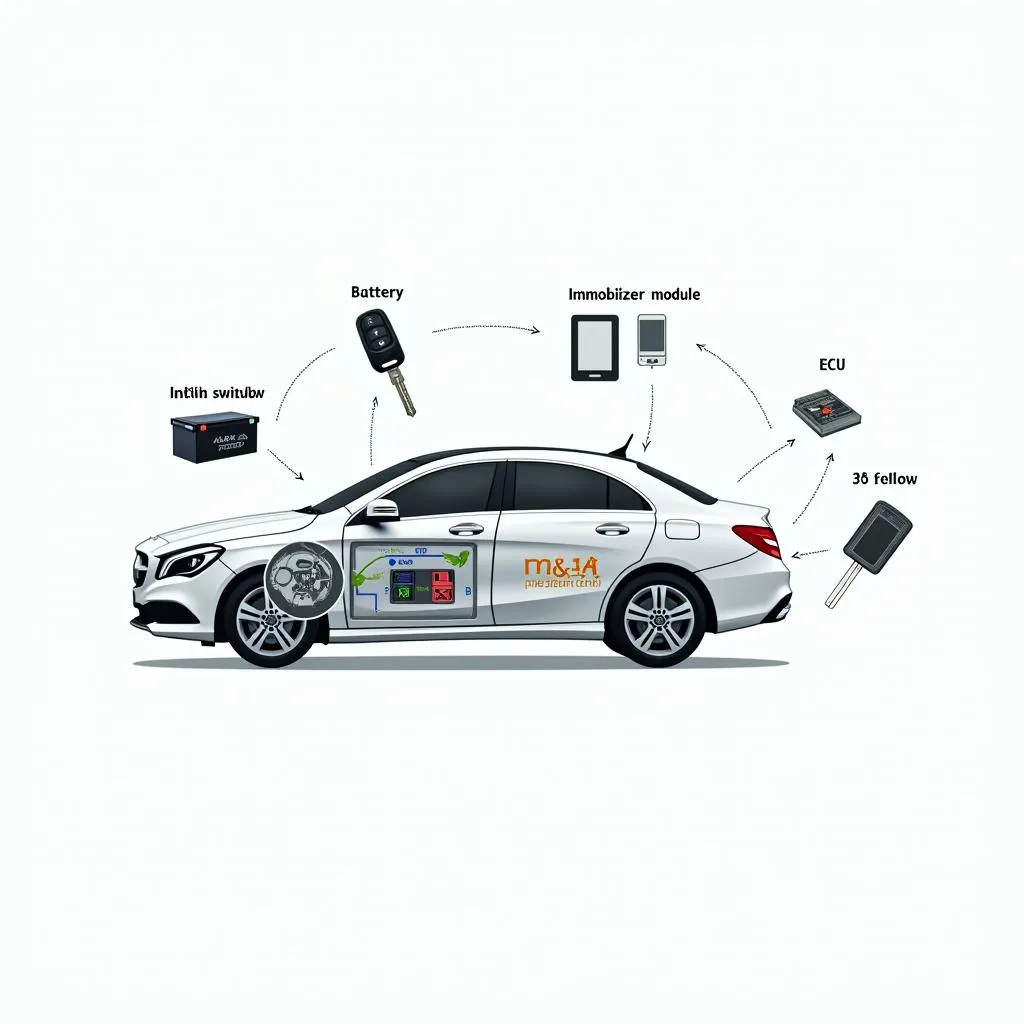A dead car battery can be a frustrating experience, but knowing how to jump-start your car can save you time, money, and stress. This guide provides a comprehensive overview of jumping a dead car, from gathering the necessary equipment to executing the process safely and effectively, offering expert tips and troubleshooting advice for various scenarios.
Gathering the Right Tools for Jump Starting
Before you begin, ensure you have the correct tools. Jumper cables are essential; choose a pair with heavy-gauge wires and strong clamps. Gloves are recommended for safety, and a flashlight can be helpful in low-light conditions. Optionally, a battery charger can be used as a preventative measure or as an alternative to jump-starting.
Understanding the Basics of Jump Starting a Car
Jumping a dead car involves connecting your dead battery to a live battery from another vehicle using jumper cables. This process allows the live battery to provide enough power to start your car. It’s crucial to connect the cables correctly to avoid damage to both vehicles’ electrical systems.
Step-by-Step Guide to Jumping a Dead Car
- Park Safely: Position the working vehicle close to the dead car, ensuring the batteries are accessible and the cars are not touching. Put both vehicles in park or neutral and engage the parking brakes.
- Prepare the Vehicles: Turn off the ignition in both vehicles. Open the hoods and locate the battery terminals. Clean any corrosion from the terminals using a wire brush or baking soda and water paste.
- Connect the Positive Clamps: Attach the red positive (+) clamp to the positive (+) terminal of the dead battery. Then, connect the other red positive (+) clamp to the positive (+) terminal of the live battery.
- Connect the Negative Clamps: Attach the black negative (-) clamp to the negative (-) terminal of the live battery. Then, connect the other black negative (-) clamp to a clean, unpainted metal surface on the dead car’s engine block, away from the battery.
- Start the Working Vehicle: Start the working vehicle and let it run for a few minutes to charge the dead battery.
- Start the Dead Vehicle: Try starting the dead car. If it doesn’t start immediately, let the working vehicle run for a few more minutes and try again.
What if the Car Still Won’t Start?
If your car still won’t start after attempting a jump-start, there could be other issues at play. It might be a problem with the starter, alternator, or another component of the electrical system. In such cases, it’s recommended to consult a qualified mechanic for further diagnosis and repair.
“Many people assume a dead battery is the only reason a car won’t start. While it’s a common culprit, other factors like a faulty alternator or starter can also be the issue. A proper diagnosis is crucial.” – David Miller, Automotive Electrical Engineer.
Troubleshooting Common Jump Starting Problems
Sometimes, despite following the correct procedure, you might encounter problems. Here are a few common issues and their solutions:
- Loose connections: Ensure all cable connections are tight and secure.
- Corroded terminals: Clean the battery terminals thoroughly.
- Faulty jumper cables: Try using a different set of jumper cables.
 Close-up of corroded car battery terminals.
Close-up of corroded car battery terminals.
Jump Starting a Car with a Push-Start
Some cars can be push-started as an alternative to using jumper cables. This method involves pushing the car to gain momentum and then engaging the clutch or putting the car into second gear to start the engine. However, this method isn’t suitable for all vehicles, particularly those with automatic transmissions.
Conclusion
Jumping a dead car is a valuable skill for any driver. By following the correct procedures and taking necessary safety precautions, you can quickly get your car back on the road. Remember, if you’re unsure about any step, consult a professional mechanic. Regularly maintaining your car battery can also minimize the chances of future jump-starting needs.
FAQ
- How long should I let the working car run before starting the dead car? A few minutes is usually sufficient to transfer enough charge to start the dead car.
- Can I jump-start a car in the rain? Yes, but exercise extra caution to avoid electric shock.
- Is it safe to jump-start a car with a different battery voltage? No, always use a battery with the same voltage.
- What precautions should I take when disconnecting the jumper cables? Remove the cables in the reverse order of connection, avoiding any contact between the clamps.
- How can I prevent my car battery from dying? Regularly check your battery’s health, avoid leaving lights or accessories on when the engine is off, and park in a garage during extreme weather.
- What are the signs of a dying car battery? Dim headlights, slow engine cranking, and clicking sounds when turning the key are common indicators.
- Can jump starting damage my car’s computer? While rare, improper jump starting can potentially damage sensitive electronics. Always follow the correct procedure.
“Prevention is key. Regular battery maintenance and mindful usage of car electronics can help avoid the need for jump starts in the first place.” – Sarah Chen, Automotive Technician.

